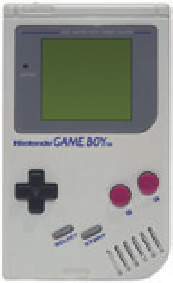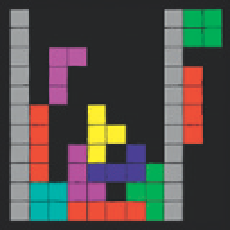Information Technology Reference
In-Depth Information
Millions of kids are spending a whole lot of hours in Minecraft, not just
digging caves and fighting monsters, but building assembly lines, space
shuttles, and programmable computers, all in the name of experimentation
and discovery. So how do we get these smart, creative kids excited about
quantum physics? We talked to our friends at MinecraftEdu and Caltech's
Institute for Quantum Information and Matter and came up with a fun
idea: a Minecraft modpack called qCraft. It lets players experiment with
quantum behaviors inside Minecraft's world, with new blocks that exhibit
quantum entanglement, superposition, and observer dependency.
9
The 1980s saw the beginnings of the video games industry with much
experimentation and many new games being developed. During the 1990s,
the games industry matured and the graphical images and animations became
increasingly realistic. Games began to be designed by large teams rather than
individuals, with a corresponding increase in costs. Because of the increased
focus on visually richer and more complex games, there has been a decline in
the number and variety of new games being produced. This trend has contin-
ued into the twenty-first century with an increasing emphasis on a small num-
ber of very successful game franchises to reduce the risk of expensive failures.
Minecraft is an encouraging exception to this trend. And technology still has
some surprises: the inexorable progress predicted by Moore's law and the rapid
growth of smart phones has created new opportunities and challenges for the
computer games industry.
Fig. 9.14. Nintendo's Game Boy hand-
held video game device was introduced
in 1989.
Angry Birds and casual gaming
The availability of more powerful microprocessors together with advances
in screen technologies allowed the development of handheld gaming devices
not requiring connection to a TV. Nintendo led the way with the introduction
of the Game Boy (
Fig. 9.14
) in 1989. One of the games that came bundled with
the Game Boy was the puzzle game Tetris (
Fig. 9.15
), in which users have to
manipulate falling blocks in a variety of shapes to form complete lines. The
game is recognized by
Guinness World Records
as being “the most ported game
in the history of video games,”
10
and versions of Tetris have now appeared on
more than sixty-five different gaming platforms.
Mobile phones became a gaming platform with the introduction of the
game Snake by Nokia in 1997. Snake was originally developed in the 1970s.
The player controls a snake that moves around the screen with the objective of
avoiding hitting its own tail. As the snake moves around, it eats food and its tail
grows longer, making it increasingly difficult to avoid. After Nokia preloaded
the game onto its phones, the popularity of Snake exploded. This was one of
the first examples of a “casual game” - a game with limited complexity that can
be played while waiting or traveling. Because of the small phone screen and
the very limited amount of memory and computing power available on mobile
phones, these early casual games needed to be very simple.
The cost of computing technology has now become low enough to make
smart phones and tablets with as much computing power as a PC widely avail-
able. Casual games explicitly designed for short play sessions are now among
Fig. 9.15. Tetris was designed and pro-
grammed by Alexey Pajitnov while he
was working at the Soviet Academy of
Sciences' Computing Center in Moscow,
Russia, in 1984.


Search WWH ::

Custom Search